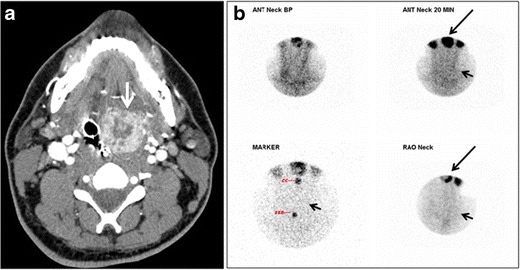Thyroid Hypoplasia

Thyroid hypoplasia is a form of thyroid dysgenesis (see this term) characterized by incomplete development of the thyroid gland that results in primary congenital hypothyroidism (see this term), a permanent thyroid deficiency that is present from birth.
Epidemiology
Prevalence is estimated at around 1/28,000. Thyroid hypoplasia and athyreosis (see this term) combined account for one-third of cases of thyroid dysgenesis.
Clinical description
Clinical manifestations of thyroid hypoplasia are often subtle or not present at birth, probably as a result of trans-placental passage of some maternal thyroid hormone or due to the fact that many infants have some thyroid production of their own. More specific symptoms and signs do not develop until several months of age. Common clinical features and signs include decreased activity and increased sleep, feeding difficulty and constipation, prolonged jaundice, myxedematous facies, large fontanels (especially posterior), macroglossia, a distended abdomen with umbilical hernia, and hypotonia. Goiter is always absent. Slow linear growth and developmental delay are usually apparent by 4-6 months of age. Without treatment thyroid hypoplasia results in severe intellectual deficit and short stature.
Etiology
Familial cases of thyroid hypoplasia are caused by mutations in the FOXE1, NKX2-1, NKX2-5 or PAX8 genes (9q22, 14q13, 5q34 and 2q12-q14). Mutations that result in partial inactivation of the TSHR gene (14q31) can present with thyroid hypoplasia.
Diagnostic methods
Imaging studies are required to confirm the diagnosis.
Genetic counseling
Thyroid hypoplasia is generally thought to be sporadic. However, recent evidence points to the possibility of a genetic component. Around 2% of cases have been shown to be familial.